Abstract
Using flow microfluorimetry (FMF), 60 sera from patients with pernicious anaemia (PA) were examined for immunoreactivity with the surface membranes of viable canine parietal cells. FMF analyses showed that the percentage of parietal cells giving a surface staining reaction with a fluorescence intensity greater than 50 arbitrary units was 44.5 +/- 17.5% for sera from 60 patients with PA compared to 13.7 +/- 2.7% for sera from 14 patients with chronic active hepatitis, 10.7 +/- 6.7% for sera from 10 patients with systemic lupus erythematosus and 16.5 +/- 4.4% for sera from 50 healthy persons. Surface staining detected by FMF was restricted to parietal cells and abolished by absorption with parietal cell enriched preparations but not by absorption with dog or rat hepatocytes, dog or rat kidney cells, human fibroblasts, human AB red blood cells or dog gastric microsomes. The intensity of the parietal cell surface staining reactions correlated with the presence of antibody reactions with parietal cell surfaces previously demonstrated by immunofluorescence microscopy but did not correlate with the presence of microsomal or intrinsic factor autoantibodies. The results provide further support for the presence of a parietal cell surface reactive autoantibody distinct from the conventional parietal cell microsomal autoantibody.
Full text
PDF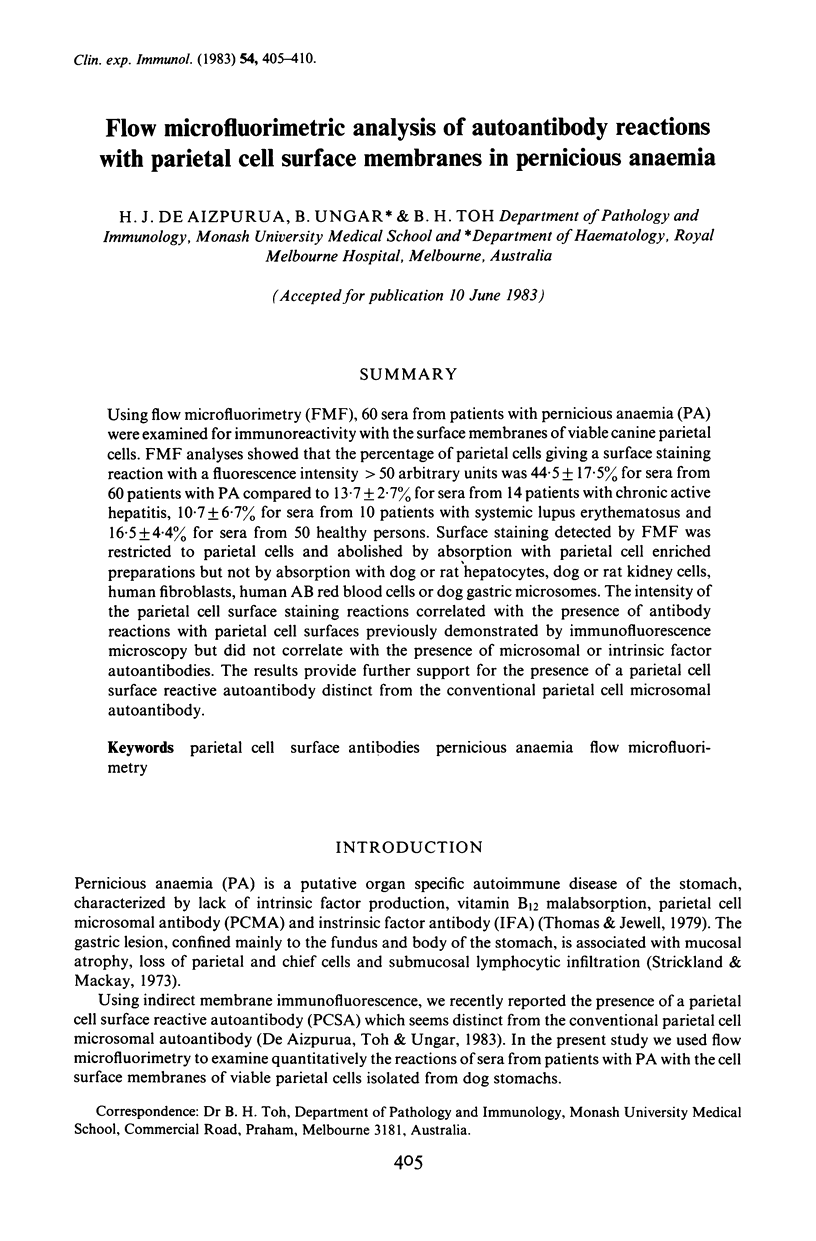
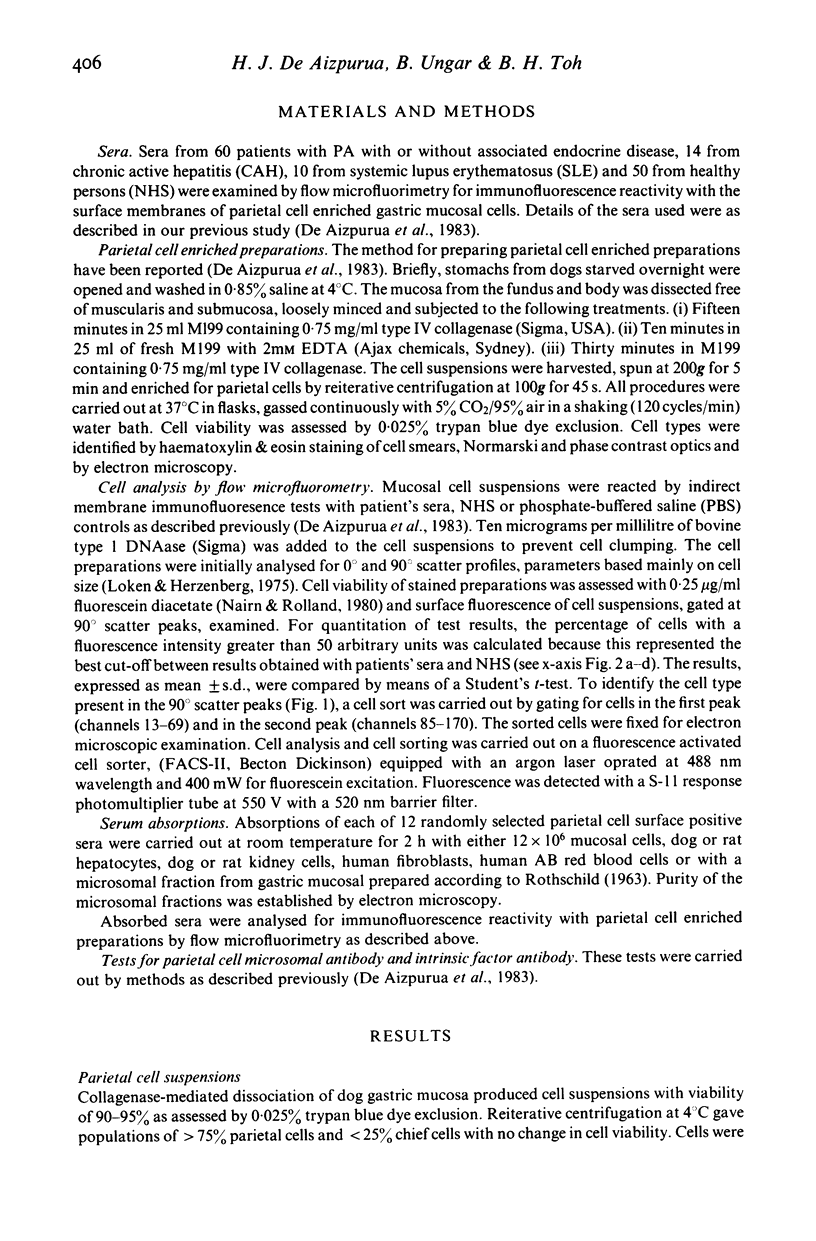
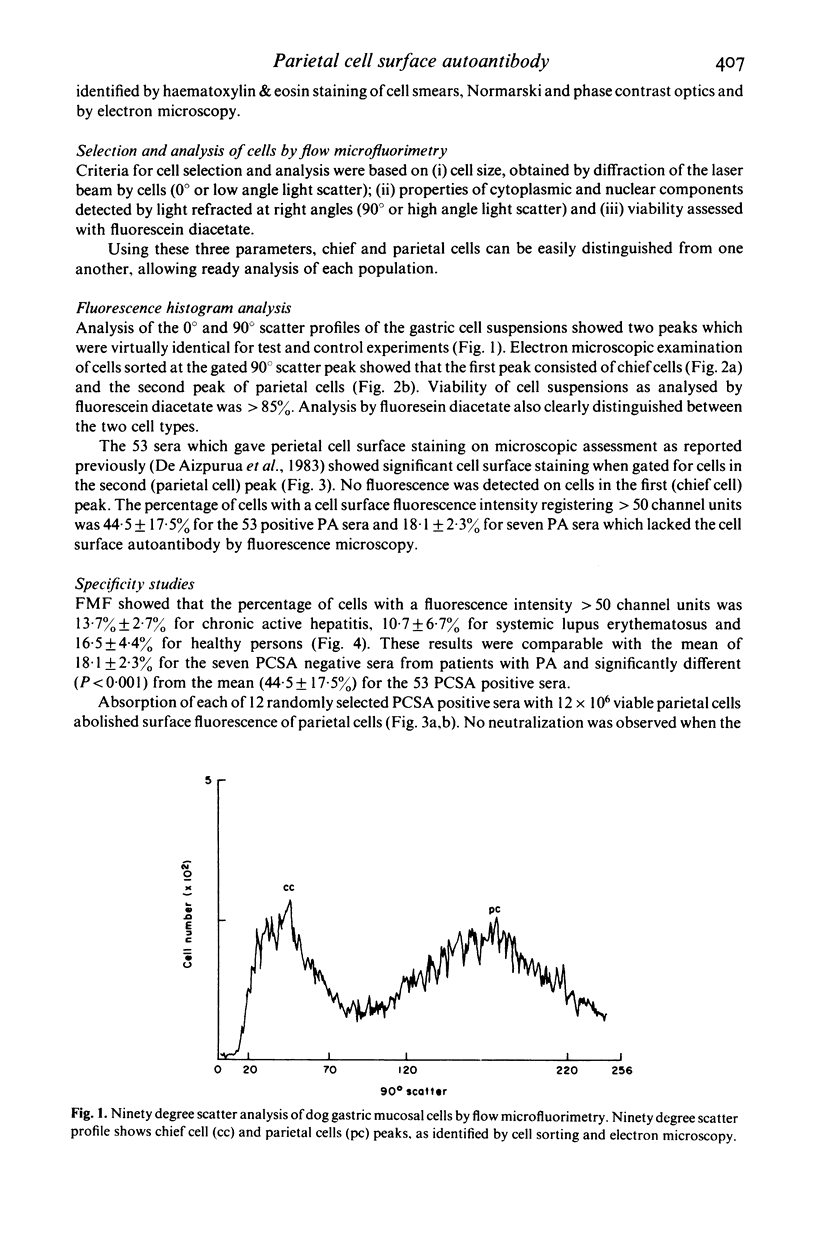
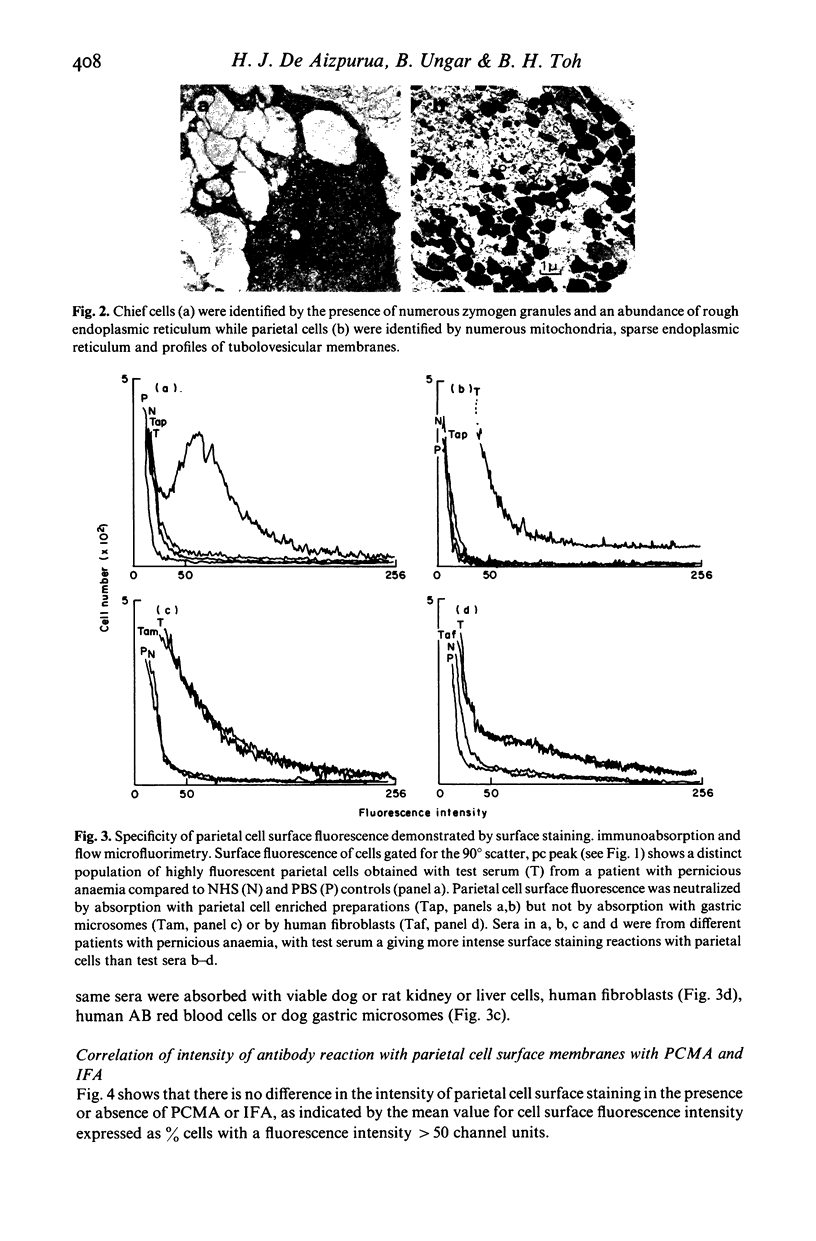
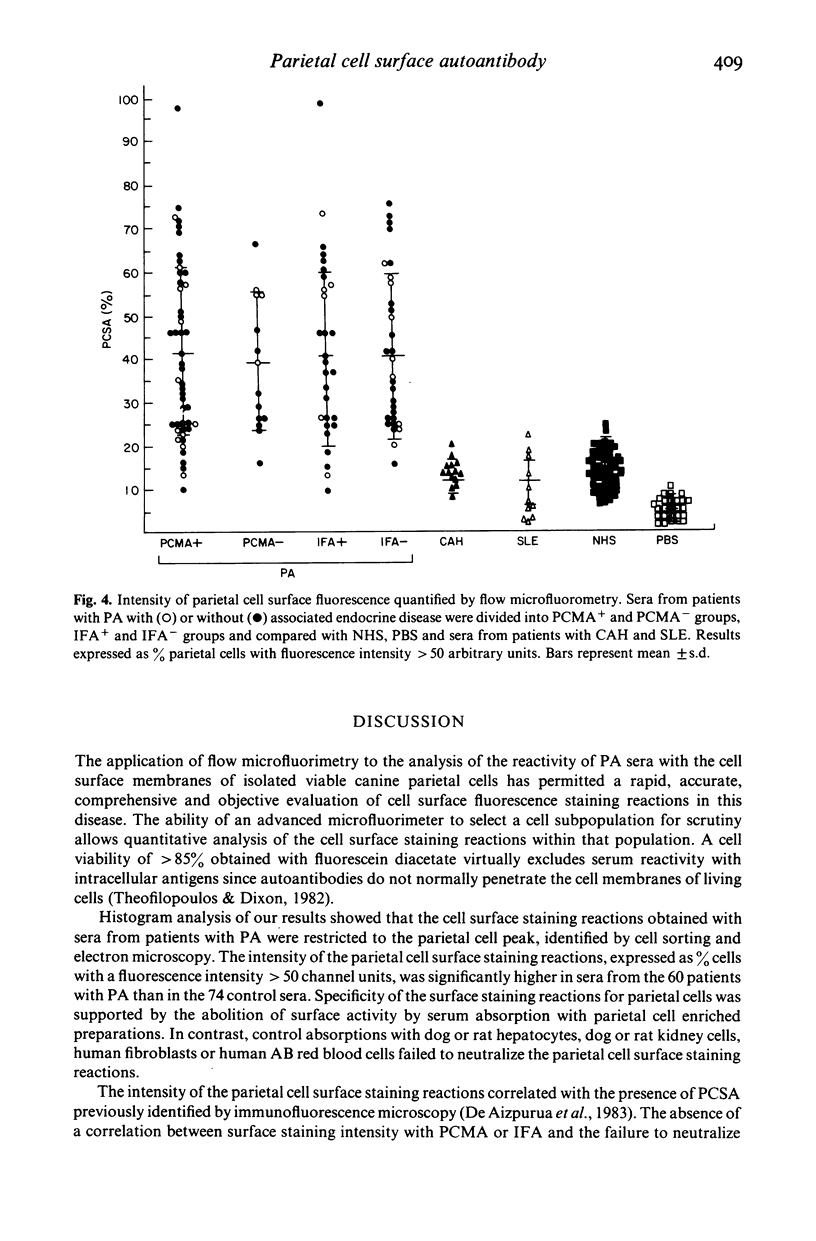
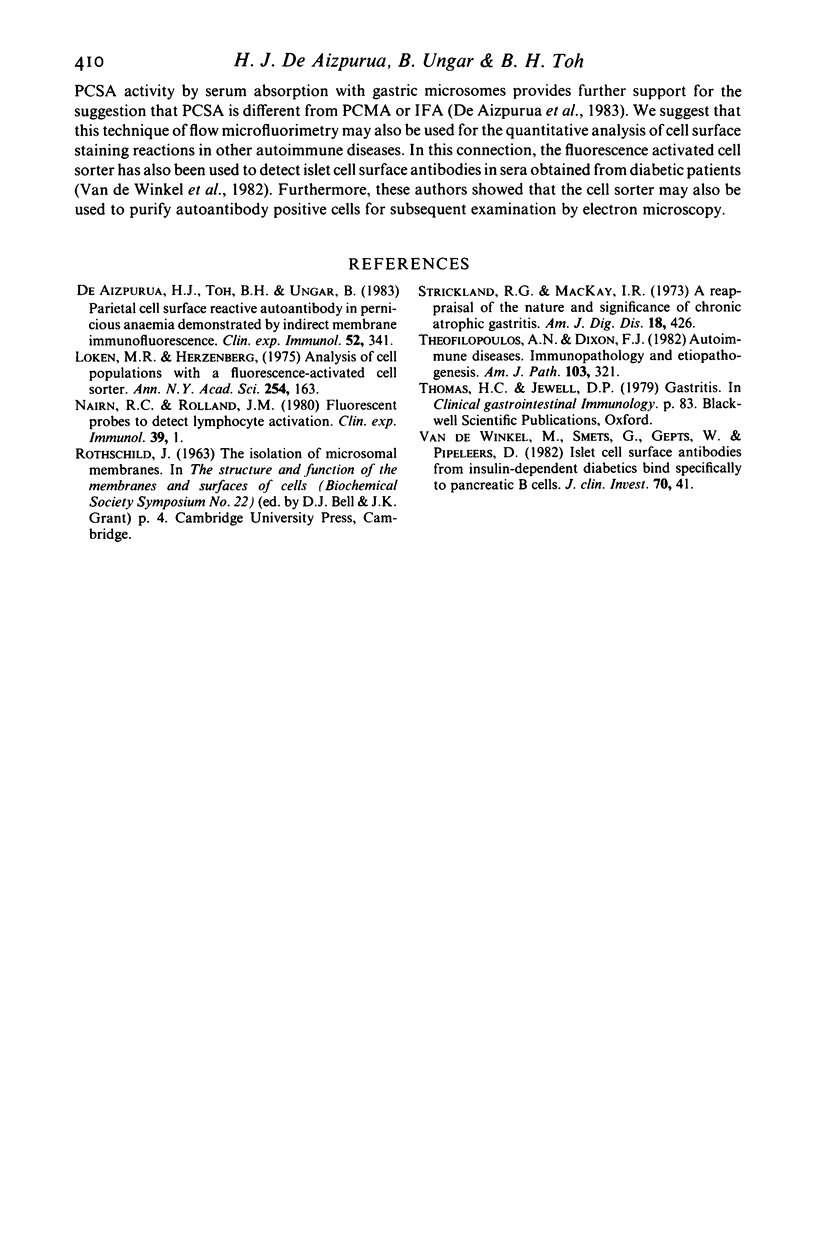
Images in this article
Selected References
These references are in PubMed. This may not be the complete list of references from this article.
- Loken M. R., Herzenber L. A. Analysis of cell populations with a fluorescence-activated cell sorter. Ann N Y Acad Sci. 1975 Jun 30;254:163–171. doi: 10.1111/j.1749-6632.1975.tb29166.x. [DOI] [PubMed] [Google Scholar]
- Nairn R. C., Rolland J. M. Fluorescent probes to detect lymphocyte activation. Clin Exp Immunol. 1980 Jan;39(1):1–13. [PMC free article] [PubMed] [Google Scholar]
- Strickland R. G., Mackay I. R. A reappraisal of the nature and significance of chronic atrophic gastritis. Am J Dig Dis. 1973 May;18(5):426–440. doi: 10.1007/BF01071995. [DOI] [PubMed] [Google Scholar]
- Van De Winkel M., Smets G., Gepts W., Pipeleers D. Islet cell surface antibodies from insulin-dependent diabetics bind specifically to pancreatic B cells. J Clin Invest. 1982 Jul;70(1):41–49. doi: 10.1172/JCI110601. [DOI] [PMC free article] [PubMed] [Google Scholar]
- de Aizpurua H. J., Toh B. H., Ungar B. Parietal cell surface reactive autoantibody in pernicious anaemia demonstrated by indirect membrane immunofluorescence. Clin Exp Immunol. 1983 May;52(2):341–349. [PMC free article] [PubMed] [Google Scholar]



